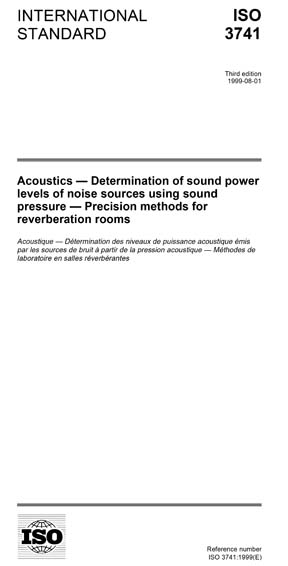Historical
ISO 3741:1999
Acoustics -- Determination of sound power levels of noise sources using sound pressure -- Precision methods for reverberation rooms
This International Standard specifies a direct method and a comparison method for determining the sound power level that would be produced by a source operating in an environment at standard meteorological conditions corresponding to a characteristic impedance of ρc = 400 N·s/m3 (where ρ is the density of air and c is the speed of sound). It specifies test room requirements, source location and general rules for operating conditions, instrumentation and techniques for obtaining an estimate of mean-square sound pressure levels from which the sound power levels of the source in octave or one-third-octave bands are calculated with a grade 1 accuracy. The quantities to be measured are time-averaged sound pressure levels in frequency bands. The quantities to be determined are sound power levels, A-weighted and in frequency bands. Other quantities, which are optional, are sound power levels with other frequency weightings calculated from the measurements in frequency bands. This standard does not provide the means to determine directivity and temporal variation of sound from a source.
In general, the frequency range of interest includes the one-third-octave bands with midband frequencies from 100 Hz to 10 000 Hz. Guidelines for the application of the specified methods in an extended frequency range in respect to lower frequencies are given in annex C. This International Standard is not applicable to frequency ranges above the 10 000 Hz one-third-octave band. For higher frequencies the use of methods given in ISO 9295 is recommended.
The method specified in this International Standard is suitable for steady noise with broad-band, narrow-band and discrete-frequency components as described in ISO 12001. The noise may be emitted from a device, machine, component or sub-assembly.
This International Standard is applicable to noise sources with volumes which are preferably not greater than 2 % of the volume of the reverberation room used for the test. For sources with volumes greater than 2 % of the room volume, the standard deviations given by Table 2 could be exceeded.
Content Provider
International Organization for Standardization [iso]






